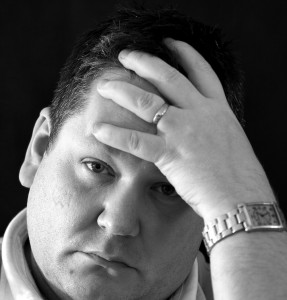 According to the CDC, for every man diagnosed with fibromyalgia, there are 7 women who fit the bill. Since so little is understood about this chronic pain condition, no one can say for sure why women are at such greater risk. However, a 2012 study suggests that the discrepancy may be more due to lack of diagnosis than lack of incidence in men.
According to the CDC, for every man diagnosed with fibromyalgia, there are 7 women who fit the bill. Since so little is understood about this chronic pain condition, no one can say for sure why women are at such greater risk. However, a 2012 study suggests that the discrepancy may be more due to lack of diagnosis than lack of incidence in men.
Researchers sought to compare the rate of diagnosed fibromyalgia with that of people who appeared to meet diagnostic criteria but received no diagnosis. They used two methods: First, they looked at medical records over a 5-year period from the Rochester Epidemiology Project, located in Olmsted County, Minnesota, and used them to determine how many people presented with possible fibromyalgia and how many people were actually diagnosed. Second, they surveyed over 800 adults in Olmsted Country to see what percentage presented fibromyalgia symptoms and likely fit the criteria for diagnosis.
The first method revealed that 1.1% of the county’s population had been given a fibromyalgia diagnosis. That’s about a third of the amount that researchers felt met diagnostic criteria based on medical record reviews. The second method showed that 5.3% of respondents seemed to be suffering from fibromyalgia. The results of the two methods combine suggest that fibromyalgia is a highly underdiagnosed and, therefore, undertreated condition. See more on the study at http://onlinelibrary.wiley.com/doi/10.1002/acr.21896/abstract.
On top of this primary finding, the study discovered a vast disproportion between the rate of men and women who exhibited symptoms and received a diagnosis of fibromyalgia. 20 times more men had fibromyalgia symptoms than had been diagnosed, compared to 3 times more women. This could be the case for a couple reasons: 1) Men may be less likely to seek treatment for the condition due to stigmatization of illness as “weakness,” and 2) health professionals may be reluctant to diagnose men, implicitly viewing fibromyalgia as a “women’s disease.”
There are a number of helpful therapies that can be pursued for fibromyalgia which decrease pain and improve your overall quality of life. Treatment is not limited to drug therapies; massage, acupuncture, moderate exercise and dietary changes have proven helpful for many. The important thing is to be proactive about your pain and seek treatment. Avoiding the doctor in the guise of toughness will only leave you physically and emotionally weaker in the long-run.
If you suspect that you have fibromyalgia and are not being given an adequate diagnosis, continue to do your research and seek out a second opinion. Proper treatment often hinges on proper diagnosis.



